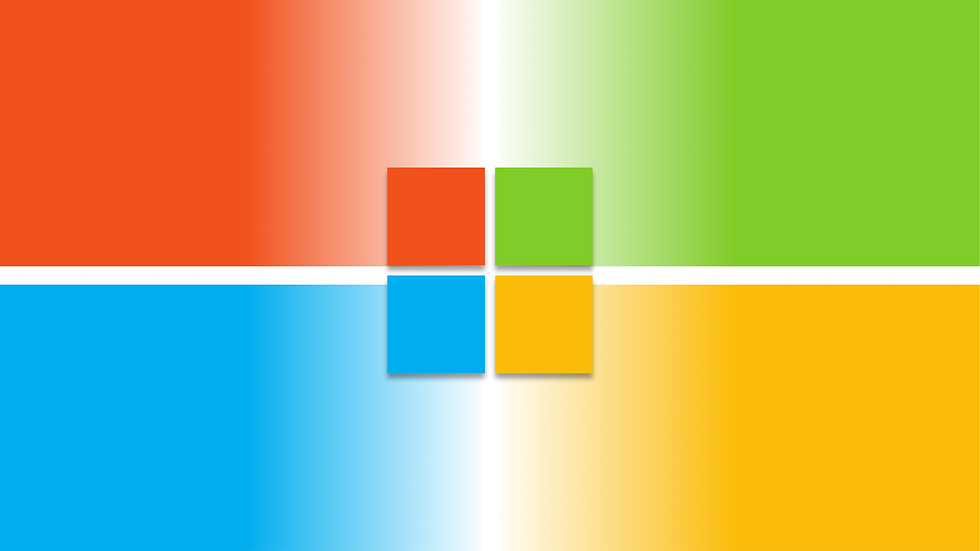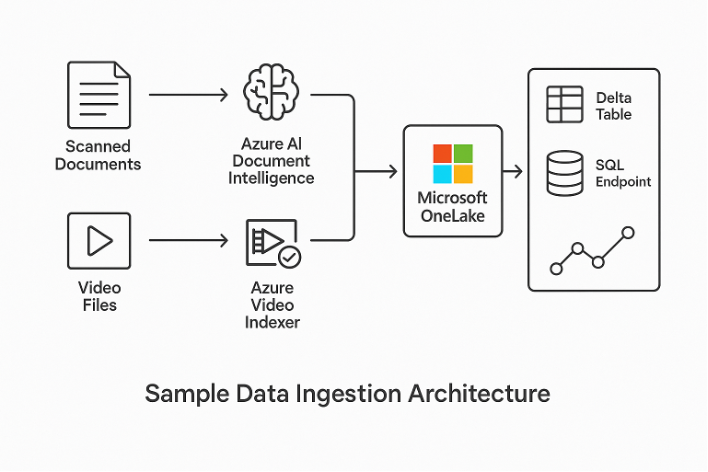Microsoft Fabric: Weaving Order from Chaos
- Joe Sams

- Aug 14
- 4 min read
Updated: Aug 18

As someone who has spent a career building IT infrastructure from the ground up, I don’t get excited about buzzwords or new tech fads. But every now and then, something comes along that isn't just noise and is a real shift. Microsoft Fabric is one of those shifts.
Think of it as the Swiss Army knife of data platforms; a cyber melting pot, if you will. It pulls together everything from data lakes and AI-driven analytics to dashboards and event-driven alerts, all wrapped in a cloud-native, Microsoft 365-integrated package. It’s powerful stuff, especially for small businesses looking to get a handle on their data without building a Frankenstein's monster of disconnected tools.
Why Microsoft Fabric Matters
For small and midsize businesses across the Mountain State and beyond, data often feels more like a burden than a blessing. Your files are everywhere. Your video security footage is stored in one place, scanned invoices in another, sales data in a spreadsheet that hasn’t been updated since the first time Rich Rodriguez was at WVU. You know what I mean.
Microsoft Fabric gives you one place to manage all that. It’s like having a digital command center where everything talks to everything else. The best part? It’s secure, scalable, and doesn’t require a team of data scientists. It’s a modern cloud data platform capability made accessible to even the most resource-constrained operations – a real rural technology transformation tool.
Here are the coolest features that caught my eye:
Microsoft OneLake – A unified data lake that stores and organizes all your enterprise data. No more duplicating files across tools.
Direct Lake Mode in Power BI – This one moves the needle. You can now build reports directly off the data lake. No more imports, no more delays. A major win for real-time decision support.
Data Activator – Set up event-driven alerts based on changes in your data. It doesn’t take much pondering to think of real applications for this such as auto-notifications for inventory thresholds, compliance breaches, or security footage triggers.
End-to-End SaaS – The whole platform runs as software-as-a-service, meaning no infrastructure headaches, just plug and play scalability.
Real-World Workflow: From Paper and Pixels to Insights
I am going to try this in my best Billy Mays, ShamWow voice: ‘“You may ask: Joe, Can It Handle Hard Copies and Media?’ You Bet. But wait, there is more!”
This is where it gets exciting for the real-world scenarios we face. Many offices still have documents from before they implemented electronic records systems. How nice would it be to be able to marry that old paper record to the electronic database? Now you can. The same can be done with images and video pertaining to the records.
(Hold my beer, watch this!)
You can upload scanned documents, video files, and images right into Microsoft OneLake. Then, using Microsoft’s AI for business services, scanned documents go through Azure AI Document Intelligence, which extracts data using Optical Character Recognition (OCR). Video files pass through Azure Video Indexer, tagging scenes, detecting speech, even recognizing faces if you need that level of analysis.
All of that metadata flows into Microsoft OneLake, and now you’re able to query, report, or trigger workflows on what used to be analog noise, unlocking insights with Microsoft Fabric for small business.

Punch Above Your Weight Class
This kind of setup isn’t just for the big guys. It’s achievable, affordable, and a serious strategic advantage for any business. Whether you’re a chain of retail stores, a manufacturing plant, or a conglomerate of organizations with different systems, lots of paper, and video clutter. Microsoft Fabric levels the playing field.
For years, advanced analytics and integrated data intelligence were luxuries only large enterprises could afford. Now, even small-town businesses can tap into enterprise-grade support tools like predictive analytics, near real-time reporting, and AI-assisted data tagging. All these things are at your fingertips.
Imagine a regional retail chain being able to automatically identify low-performing SKUs across stores using nothing more than scanned sales slips and camera footage. Or a manufacturer using Microsoft Fabric to detect bottlenecks by correlating video logs with machine performance data. Decisions once based on gut instinct and fragmented reports can now be backed by integrated, visualized, and actionable data.
This isn't just IT for IT's sake. It's about making smarter decisions faster, with less overhead, and more confidence. It's about empowering local teams with the same caliber of insight as national chains. And in rural states like West Virginia (WV), that's how you attract new investment, grow your operations, and thrive long-term.
Final Thoughts from the Mountain Top
Microsoft Fabric is more than just another tech platform. It’s a tool that levels the playing field. It allows small and medium-sized businesses to compete with anyone, anywhere. And as a proud WV business owner, that fires me up.
So, whether you’re wrangling spreadsheets, scanning forms, or managing surveillance feeds, don’t sleep on Microsoft Fabric. This isn’t just hype, it’s cloud analytics horsepower that will pin you back in your seat and knock your hair off.
If you’re interested in what a Microsoft Fabric implementation might look like for your organization, give me a holler. I’m always happy to help good folks use great tech.
God bless and keep building smart from the hills.
Joey Sams
WV-Tech Guy | Founder, Biztec
About the Author
Joe Sams is a seasoned business and technology leader with decades of experience building high-performance teams and scaling IT organizations. He has led transformational initiatives in cybersecurity, managed services, and cloud technologies. His leadership philosophy centers on mission-first thinking, servant leadership, and cultivating cultures of accountability and innovation.




Comments